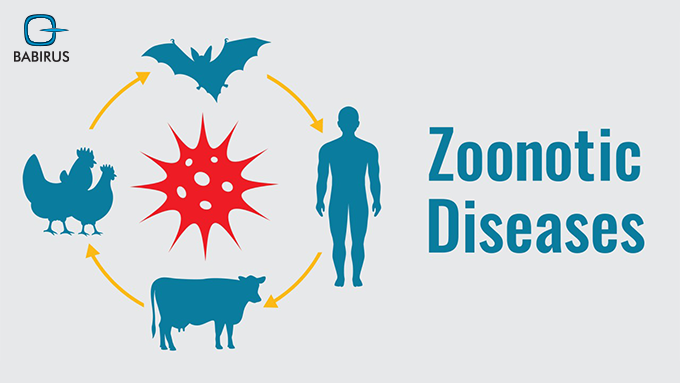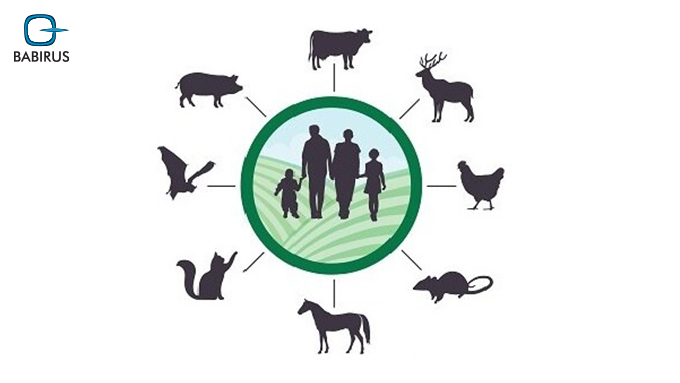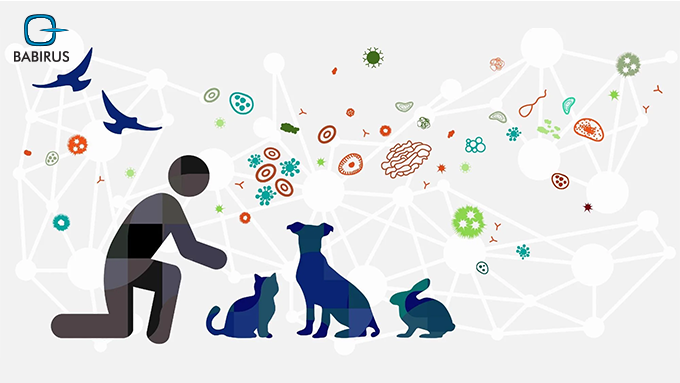Emerging Zoonotic Diseases: What You Need to Know

Zoonotic diseases, those transmitted between animals and humans, have shaped global health throughout history. From the bubonic plague to more recent threats like COVID-19 and avian influenza, these illnesses remind us how interconnected our health is with the world around us.
In recent years, there’s been a noticeable increase in the number of zoonotic outbreaks. Environmental changes, population growth, and global travel have created ideal conditions for these diseases to emerge and spread. If you’ve heard terms like “spillover event” or “animal-to-human transmission” and wondered what they mean or why they matter, you’re not alone.
In this blog, we’ll explore what zoonotic diseases are, how they arise, recent examples, and most importantly, what steps individuals and healthcare systems can take to stay ahead of the curve.
What Are Zoonotic Diseases?
Zoonotic diseases or animal-borne infections, are illnesses caused by viruses, bacteria, fungi, or parasites that are passed between animals and humans. While some of these diseases have been around for centuries, new ones are appearing at a faster pace. When a new or previously rare animal-borne disease begins to spread in humans, it’s referred to as an “emerging zoonotic disease.”
Some zoonotic diseases are mild and treatable. Others can trigger global outbreaks and affect millions of people. What makes these illnesses complex is their unpredictable nature; the same virus may behave very differently depending on the species it infects, the region it appears in, and the speed at which it spreads.
What Causes Zoonotic Diseases?
Zoonotic diseases can be caused by a wide range of pathogens; not just viruses, but also bacteria, parasites, fungi, and even rare agents known as prions. While many of these organisms usually infect specific animal species, some can evolve or mutate to infect humans, crossing what’s known as the species barrier.
The most common sources include:
- Bacteria: These are responsible for illnesses like salmonella, leptospirosis, and anthrax.
- Viruses: From rabies to Ebola and COVID-19, viruses make up a significant share of emerging zoonoses.
- Parasites: Protozoa and worms that cause diseases like toxoplasmosis or echinococcosis can be passed from animals to humans.
- Fungi: Infections like ringworm, which can spread from pets to people, fall into this category.
- Prions: Though rare, prions cause serious conditions such as variant Creutzfeldt-Jakob disease (vCJD), sometimes linked to contaminated meat from affected cattle.
In many cases, these pathogens start out confined to animals. Over time, through genetic changes or increased contact with human hosts, they gain the ability to infect people. Once that jump happens, the potential for widespread transmission can increase; especially when symptoms go unrecognized or the illness spreads easily between humans.
How Do Zoonotic Diseases Spread from Animals to Humans?
There are several routes by which a zoonotic infection can pass from animals to humans:
- Direct Contact: Handling infected animals or their bodily fluids (e.g., saliva, blood, urine, or feces).
- Indirect Contact: Touching surfaces or environments contaminated with pathogens, such as animal bedding, cages, or tools.
- Vector-Borne Transmission: Carried by mosquitoes, ticks, or fleas, which act as carriers for diseases like Lyme disease or dengue fever.
- Foodborne Transmission: Consuming undercooked meat, unpasteurized milk, or contaminated produce.
- Airborne Transmission: Inhaling droplets or particles containing pathogens, especially in crowded environments like live animal markets or farms.
Many emerging zoonotic diseases start in wildlife populations before spreading to domestic animals and eventually to humans, a process known as “spillover.” Human activities, like deforestation and urban expansion, have increased contact with wild animals, making spillover more common.
What Animals Carry Zoonotic Diseases?
Nearly every animal species, wild or domesticated, can potentially carry pathogens that can pass to humans. The risk often depends on the nature of contact, the environment, and the immune status of both the animal and the person.
Some animals more commonly linked to zoonotic diseases include:
- Bats: Known reservoirs for viruses like rabies, Nipah, and coronaviruses.
- Birds: Especially waterfowl and poultry, which can carry avian flu and psittacosis.
- Rodents: Mice, rats, and voles may spread diseases like hantavirus or leptospirosis.
- Cats and Dogs: While beloved pets, they can carry parasites like toxoplasma or bacteria such as Bartonella (cat scratch disease).
- Livestock: Cows, pigs, and sheep are linked to diseases such as brucellosis, Q fever, and swine flu.
- Non-Human Primates: Monkeys and apes have been associated with viruses like simian foamy virus and Ebola.
- Deer: Ticks found on deer can transmit Lyme disease and other tick-borne illnesses.
These animals don’t always show signs of illness themselves, which makes it difficult to spot the source of infection without proper surveillance. That’s why its important to monitor both wild and domesticated animals as part of zoonotic disease prevention.
Examples of Emerging Zoonotic Diseases
Over the last few decades, several zoonotic diseases have moved from isolated outbreaks to global headlines:
COVID-19 (SARS-CoV-2)
Thought to have originated in bats, the novel coronavirus likely passed through an intermediary host before infecting humans. It’s now one of the most significant zoonotic outbreaks in recent memory.
Nipah Virus
First identified in Malaysia in the late 1990s, this virus is transmitted from bats or pigs, then to humans. It causes severe respiratory and neurological symptoms and has a high fatality rate.
Avian Influenza (Bird Flu)
Spread primarily by wild birds and poultry, this disease can infect humans who have close contact with infected birds. Strains like H5N1 and H7N9 have raised public health concerns in the past.
Monkeypox (Mpox)
A rare but growing threat, mpox is transmitted through close contact with infected individuals or contaminated materials. Originally found in certain African regions, it has recently spread more widely.
Ebola Virus
Ebola is a deadly viral disease believed to originate from fruit bats and spreads to humans through contact with infected animals or bodily fluids. It causes severe symptoms and has led to multiple outbreaks, particularly in West and Central Africa. The 2014–2016 epidemic remains one of the most significant in recent years.
Why Are Zoonotic Diseases on the Rise?
Several global shifts are contributing to the increase in zoonotic disease outbreaks:
- Habitat Destruction: Deforestation and development drive animals closer to human populations, increasing contact.
- Global Trade and Travel: The movement of goods, animals, and people enables pathogens to spread across borders within hours.
- Climate Change: Altered ecosystems create new environments where disease-carrying animals and insects can thrive.
- Urbanization: Expanding cities often encroach on natural habitats, increasing interaction with wildlife.
- Farming Practices: Large-scale livestock production can accelerate the spread of disease between animals and people.
These factors create ideal conditions for pathogens to evolve, adapt, and find new hosts; including humans.
The One Health Approach
Emerging zoonotic diseases have made it clear that human, animal, and environmental health are deeply connected. This is where the One Health approach comes in; a collaborative model that encourages multiple sectors to work together to prevent and manage disease outbreaks before they spiral into global crises.
Rather than addressing human health separately, One Health looks at the bigger picture. For instance, monitoring livestock for signs of illness can help prevent transmission to farmers and surrounding communities. Keeping track of wildlife health offers early warning signs for new viruses that may jump to humans. Environmental changes, such as deforestation or shifting climates, can alter how and where these diseases emerge.
Many global health organizations are now embracing One Health as a foundational principle. It brings together veterinarians, medical professionals, environmental scientists, epidemiologists, and public health officials to improve surveillance, share data, and coordinate faster responses when new threats arise.
This kind of collaboration helps track disease patterns more efficiently and strengthens our collective response to emerging zoonotic threats.
How Are Zoonotic Diseases Detected?
Early detection is key to controlling zoonotic outbreaks. Modern diagnostics play a major role in identifying pathogens quickly and accurately:
- Molecular Diagnostics: PCR-based testing is commonly used to detect viral and bacterial DNA or RNA in patient samples.
- Serology: Blood tests can identify antibodies, revealing whether someone has been exposed to a particular pathogen.
- Multiplex PCR Panels: In outbreak scenarios, these tests can detect multiple pathogens at once, saving time and resources.
For instance, in recent mpox outbreaks, rapid PCR diagnostics have helped labs confirm infections swiftly and distinguish between clades. Emerging platforms like Bioperfectus’ Monkeypox PCR and Genotyping Kit offer even more detailed results, detecting as few as 5 copies per reaction and differentiating between virus strains.
Prevention: What Can Be Done?
While some zoonotic diseases are hard to predict, several measures can lower the chances of an outbreak:
- Strengthen Surveillance Systems: Early warning systems for animal and human disease detection can stop outbreaks before they spread.
- Improve Veterinary Care: Healthy livestock are less likely to transmit diseases to people.
- Educate the Public: Raising awareness about safe food handling, wildlife interactions, and hygiene can reduce risk.
- Regulate Wildlife Trade: Controlling the trade of exotic animals helps prevent spillover events.
- Invest in Vaccination: Some zoonotic diseases can be controlled through targeted vaccination programs for both humans and animals.
Looking Ahead: Staying One Step Ahead of the Next Threat
Zoonotic diseases aren’t new; but the speed at which they emerge and spread is increasing. That’s why staying proactive matters.
Technology, scientific research, and better collaboration between health sectors are helping us respond faster and smarter. By identifying the links between people, animals, and the environment, we can develop better tools to protect public health and reduce the burden of zoonotic infections globally.
Lastly,
From wildlife markets to suburban backyards, the sources of zoonotic infections are varied and often unpredictable. As these threats continue to grow, so does the need for smarter, more connected health systems.
At Babirus, we support diagnostic solutions designed to detect emerging zoonotic diseases with greater speed and precision. Contact us to explore how our testing platforms can support your lab’s diagnostic capabilities and keep your community prepared.


